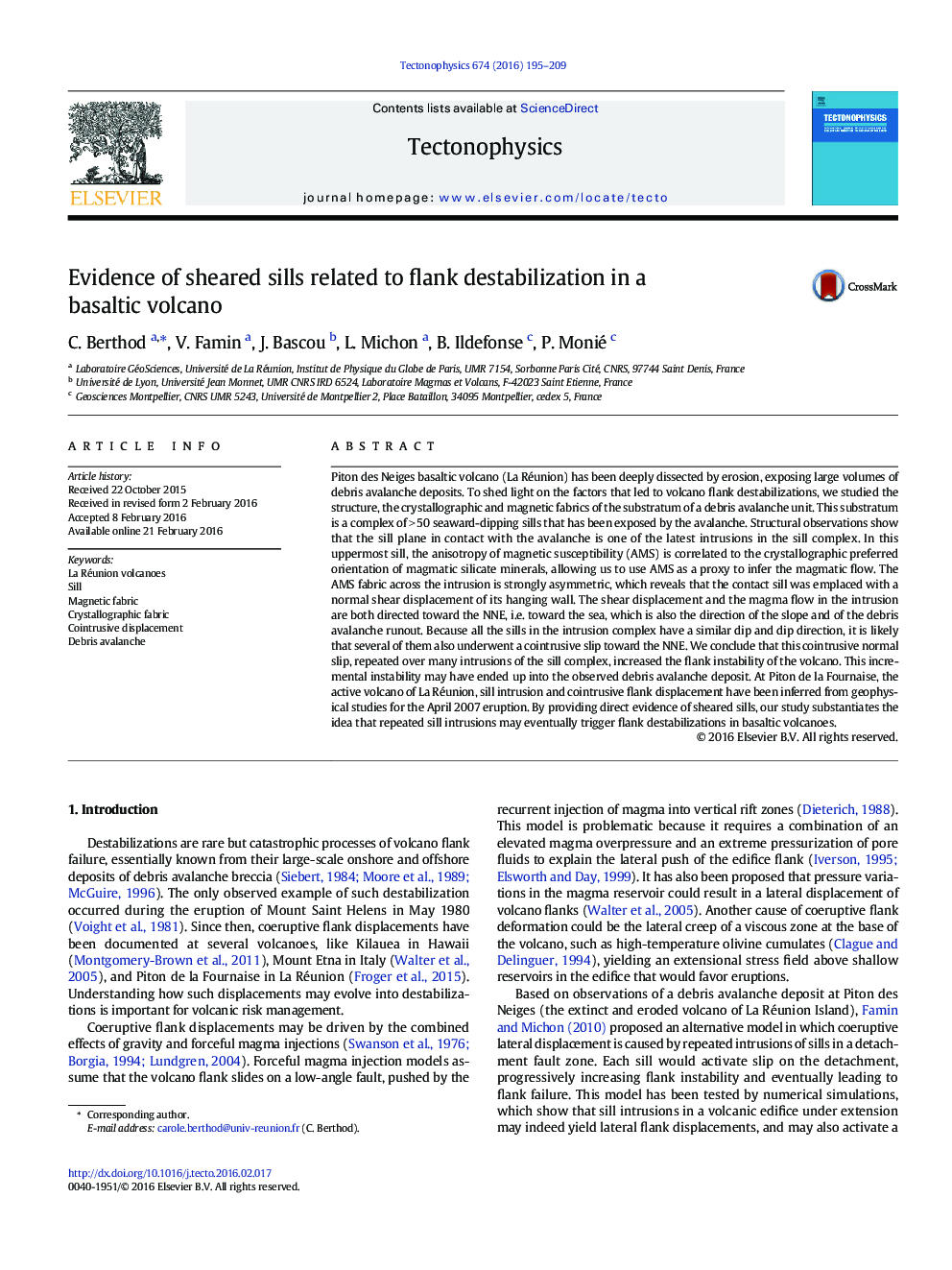| Article ID | Journal | Published Year | Pages | File Type |
|---|---|---|---|---|
| 6433477 | Tectonophysics | 2016 | 15 Pages |
â¢A zone of multiple sills localizes shear deformation at Piton des Neiges volcano.â¢Sill magnetic fabric reveals cointrusive normal slip of the intrusion hanging wall.â¢The sill zone acted as a sliding surface for a debris avalanche.â¢Shear deformation, cointrusive sill slip and avalanche are directed toward the sea.â¢Repeated sill injections may increase volcano instability, leading to flank failure.
Piton des Neiges basaltic volcano (La Réunion) has been deeply dissected by erosion, exposing large volumes of debris avalanche deposits. To shed light on the factors that led to volcano flank destabilizations, we studied the structure, the crystallographic and magnetic fabrics of the substratum of a debris avalanche unit. This substratum is a complex of >Â 50 seaward-dipping sills that has been exposed by the avalanche. Structural observations show that the sill plane in contact with the avalanche is one of the latest intrusions in the sill complex. In this uppermost sill, the anisotropy of magnetic susceptibility (AMS) is correlated to the crystallographic preferred orientation of magmatic silicate minerals, allowing us to use AMS as a proxy to infer the magmatic flow. The AMS fabric across the intrusion is strongly asymmetric, which reveals that the contact sill was emplaced with a normal shear displacement of its hanging wall. The shear displacement and the magma flow in the intrusion are both directed toward the NNE, i.e. toward the sea, which is also the direction of the slope and of the debris avalanche runout. Because all the sills in the intrusion complex have a similar dip and dip direction, it is likely that several of them also underwent a cointrusive slip toward the NNE. We conclude that this cointrusive normal slip, repeated over many intrusions of the sill complex, increased the flank instability of the volcano. This incremental instability may have ended up into the observed debris avalanche deposit. At Piton de la Fournaise, the active volcano of La Réunion, sill intrusion and cointrusive flank displacement have been inferred from geophysical studies for the April 2007 eruption. By providing direct evidence of sheared sills, our study substantiates the idea that repeated sill intrusions may eventually trigger flank destabilizations in basaltic volcanoes.
